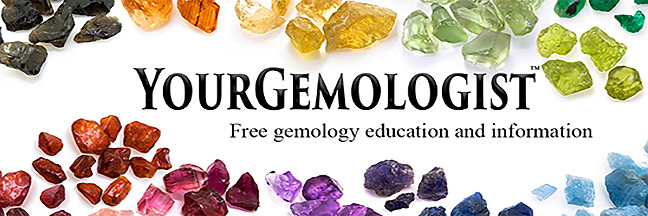 |
|
|
|
 Sapphire Sapphire |
|
Consumer Information What color is it?: Well, as you see above it can be a lot of colors. Sapphires actually occur in virtually every color of the rainbow. Above you see a blue. And below you will find some green and purple. Name a color and you will find a sapphire very close. Except for the pure red stones. These are rubies. But anything with a strong purple overtone or definite pink color will be properly called a sapphire. What is the story behind this gemstone?: One of the most beautiful and historic gemstones in the world. Sapphires speak for themselves I believe. Can I wear it everyday?: Absolutely. Second only to diamond in hardness. And very tough to break (although it can be done). Is it expensive?: Yes they can be. And please read this: Most sapphires are heat treated to enhance their color. If it were not for heat treatment (see Gemstone Treatments) we would not have many sapphires. But a true natural, unheated sapphire of fine blue color will be very expensive. Sometimes tens of thousands of dollars. While the heated stones can be very beautiful and cost only hundreds of dollars. You choose which you would like to have. But be prepared. If you are offered a less expensive sapphire that is a beautiful color, it is more than likely heated. If you are told otherwise be very cautious. Is it a birthstone?: Yes, September. (blue)
|
|
|
Source: World Wide but mostly from the Far East countries like Sri Lanka, Thailand, and Burma Chemical: Al2O3 aluminum oxide Formation: Mainly in igneous rocks Crystal System: Hexagonal in habit but often referred to as trigonal.
|
|
|
© 2011 YourGemologist.com and Robert James FGA, GG. All Rights Reserved. No part of this website may be copied, duplicated, distributed or posted to another website without the expressed written consent of the copyright holder. |
|
|
|
|
 What do I need to know before going shopping?: Keep some common sense about you. Sapphires
of 5.00 carats or more are available in department and discount
stores for only a couple of hundred dollars. But they are so
dark they look black. Like black onyx. It may sound great that
you are getting a huge sapphire at such a deal,
but stand back and look at it....its ugly. Too dark to show any
color. Sapphires are supposed to show beautiful colors. And you
get what you pay for. Look for some unusual colors in sapphires.
They can be very, very unique. But forget the big cheap dark,
dark sapphires from the discount stores. After all, who are you
going to impress at the party with a big ugly black rock on your
hand?
What do I need to know before going shopping?: Keep some common sense about you. Sapphires
of 5.00 carats or more are available in department and discount
stores for only a couple of hundred dollars. But they are so
dark they look black. Like black onyx. It may sound great that
you are getting a huge sapphire at such a deal,
but stand back and look at it....its ugly. Too dark to show any
color. Sapphires are supposed to show beautiful colors. And you
get what you pay for. Look for some unusual colors in sapphires.
They can be very, very unique. But forget the big cheap dark,
dark sapphires from the discount stores. After all, who are you
going to impress at the party with a big ugly black rock on your
hand?
 General Information
General Information Unusual
Properties: Many. Including
color change, chatoyancy and star sapphire as shown here with
a black star sapphire.
Unusual
Properties: Many. Including
color change, chatoyancy and star sapphire as shown here with
a black star sapphire.